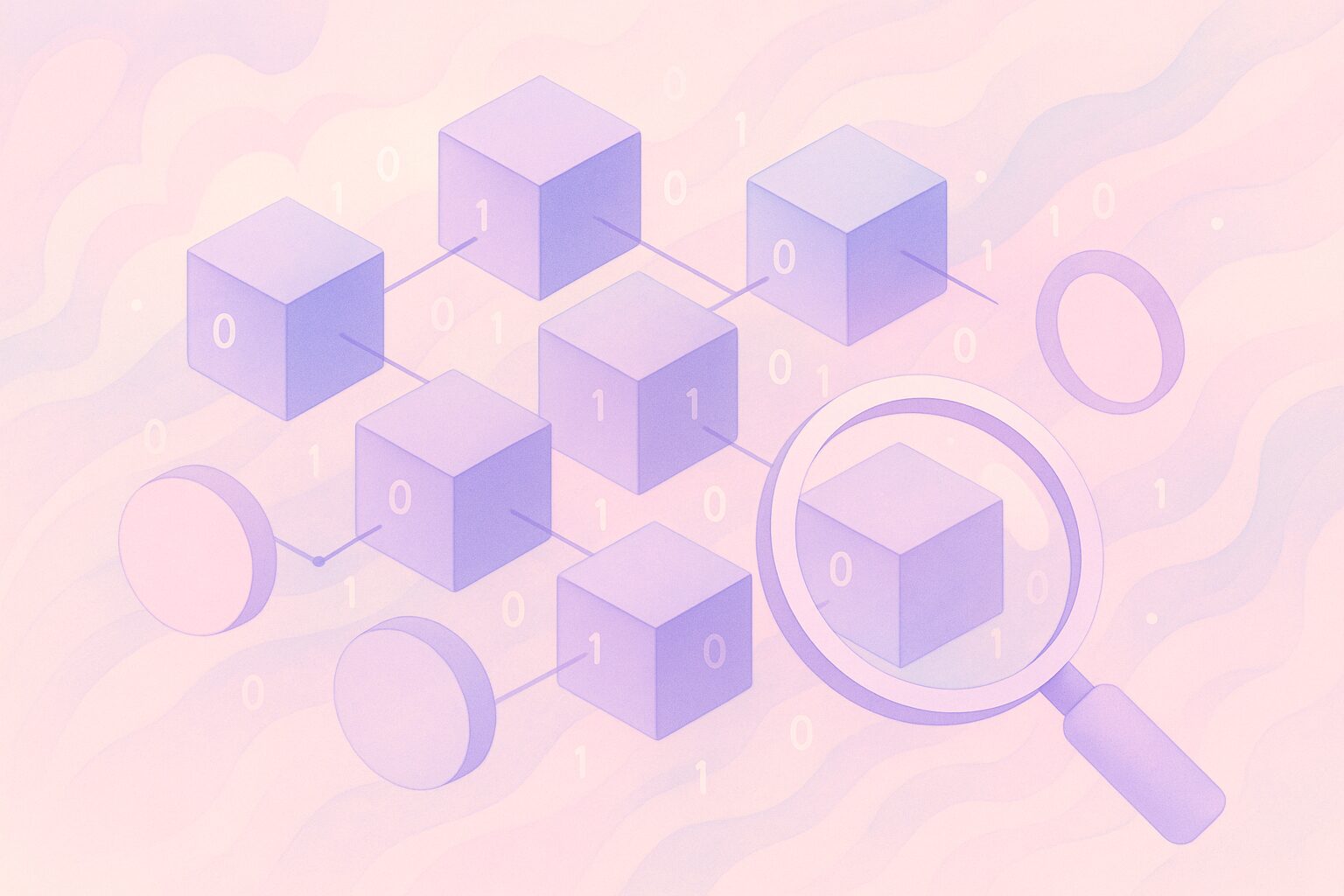Overview
Blockchain explorers are essential tools for navigating and analyzing blockchain activity. Every transaction recorded on a blockchain is assigned a transaction hash (TX Hash), which allows users to track its status, sender/receiver details, fees, and other relevant metadata.
Each blockchain has its own explorer, though some are more popular than others and may vary in features provided. In general, each provides both real-time and historical data about transactions, token transfers, network activity, and more.
Some of the main blockchain explorers include:
- Ethereum: Etherscan & Ethplorer
- Avalanche → SnowTrace & Avascan
- Solana: Solana Explorer & SolScan
- Bitcoin → Btcscan & mempool
- Base → Base Blockscout & BaseScan
That being, each network has many more explorers which each try to differentiate based on the user experience, additional features, and more.
Below, we’ll provide an easy-to-follow overview that will make it easy to get started in analyzing on-chain data.
Basic Features of a Blockchain Explorer
A blockchain explorer provides various insights into network activity, including:
1. Transaction Details
- Every transaction on the blockchain has a unique transaction hash (TX Hash).
- Clicking on a TX Hash in an explorer reveals:
- Sender & Receiver Addresses: Who sent and received the transaction.
- Transaction Status: Whether the transaction succeeded, failed, or is pending.
- Block Number: The block in which the transaction was confirmed.
- Gas Fees: The cost paid for the transaction (in ETH, SOL, etc.).
- Smart Contract Interactions: Whether the transaction involved a DeFi protocol, NFT mint, or token swap.
2. Token & Token Holder Data
For any token contract, you can check information such as:
- The Top Holders: The largest wallets holding a specific token
- Supply Distribution: How concentrated the token supply is
- Transfers: Recent transfers of the token across wallets.
3. Network Blocks & Validators
Blockchains process transactions in blocks, which validators or miners create.
Explorers show:
- Latest Blocks: Recently added blocks to the chain.
- Validator Information: The entity responsible for validating the block (PoS networks like Ethereum and Solana display this).
- Epochs & Finality: On Solana, for example, you can track validator rewards and epoch progress.
4. Contract & Smart Contract Execution
On EVM-compatible chains (Ethereum, Avalanche, BNB Chain), smart contracts can be explored to:
- Read contract functions.
- View interactions with DeFi, NFTs, and DApps.
- Check the source code (if verified) for transparency.
How to Read a Blockchain Transaction
To illustrate how to analyze a transaction, we’ll use the below image from Etherscan as an example, showing a randomly chosen transaction that occurred on March 18th.

Graphic: An example transaction from Etherscan.
There are 10 relevant lines in the above graphic:
- Transaction Hash: A unique identifier assigned to this transaction, allowing it to be tracked on the blockchain.
- Status: This shows whether the transaction was successful, failed, or pending. In this case, it was marked “Success”.
- Block: The block number in which this transaction was confirmed, with 34 block confirmations indicating finality.
- Timestamp: The exact time when the transaction was processed.
- Transaction Action: Specifies the type of transaction. In this case, ETH was transferred.
- From: The sender’s address. In this case, their wallet address is registered via Ethereum Name Service (ENS), which translates complex Ethereum addresses into human-readable names. This is why titanbuilder.eth is displayed instead of a long hexadecimal address.
- To: The recipient’s address indicating where the ETH was sent.
- Value: The amount transferred: 0.010174900 ETH, approximately $19.37 at the time of the transaction.
- Transaction Fee: The gas fee paid to process the transaction.
- Gas Price: The cost per unit of gas (0.450 Gwei) determines the transaction’s speed and cost efficiency.
That being said, transaction details can vary by network and by specific blockchain explorer. For example, transactions via SolScan include additional fields such as different terminology (“Signature” instead of “Transaction Hash” and some new fields including:
- Compute Units Consumed: The amount of computational resources used for the transaction.
- Lookup Table Account: Stores precomputed addresses to reduce transaction size.
- Instruction Details: A breakdown of program interactions (e.g., calling the project’s specific smart contract).
- Program Logs: Insights into the transaction’s behavior and any potential errors.
Each explorer may also have advanced features, such as API-related data or Ethereum-based explorers providing data on Ethereum “blobs”.
Interesting Use Cases of a Blockchain Explorer
Blockchain explorers have vast amounts of data, meaning that advanced use cases are possible. Given that they can be challenging for the average user to navigate, there’s also significant potential for those that create user-friendly interfaces, such as Bubble Maps, which create visuals based on blockchain data.
A few interesting ones include:
- Tracking Insider Trading & Market Manipulation: Watch whale wallets, project team allocations, and early investor activity to detect suspicious token dumps before a price crash.
- Downloading XLS Data for Custom AI-Powered Trading Models: Export large datasets from blockchain explorers and train AI models for predicting price movements, yield farming trends, or liquidation risks.
- Identifying Airdrop Farming Strategies: Analyze how users interact with new protocols across multiple wallets to determine patterns that qualify for airdrops.
- Monitoring Wallets of High-Profile Traders: Follow the addresses of known DeFi whales, influencers, or MEV traders to copy their yield farming or NFT flipping strategies.
- Tracing Stolen Funds & Exploit Recovery: Victims of hacks, rug pulls, or phishing scams can trace where funds are moving, monitor laundering tactics, and report transactions to law enforcement.
- Analyzing Gas Fee Arbitrage Across Chains: Compare gas costs on Ethereum, Arbitrum, Optimism, and Base to determine the most cost-efficient times and chains for large transactions.
Other examples include tracking NFT minting contracts to snipe, checking validator rewards, researching DAO governance decisions, uncovering crypto exploits before they go public, and much more.


